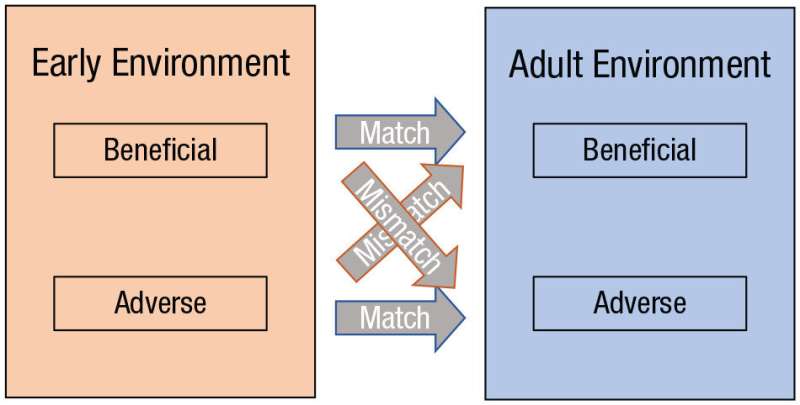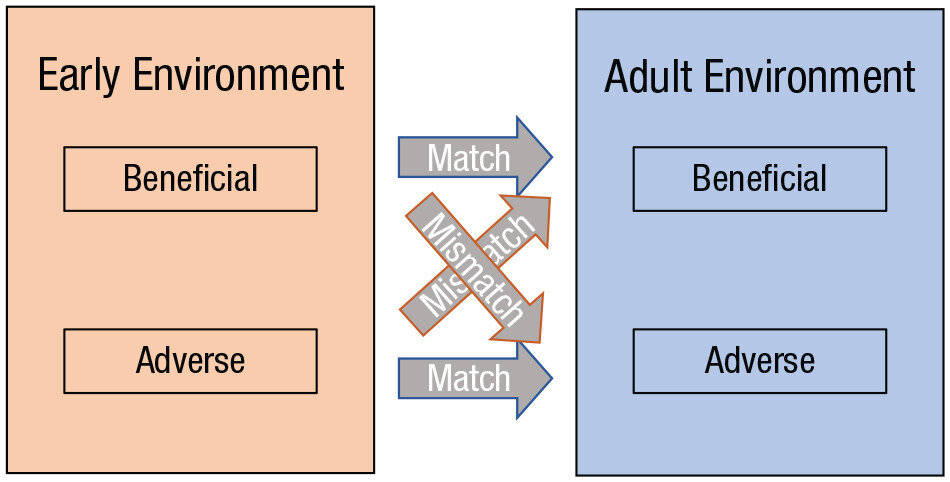
Why is it that mental disorders such as depression are so common? Psychologists Marèn Hoogland and Annemie Ploeger analyzed three major theories from evolutionary developmental psychology to find a better explanation for mental disorders. All three of these theories link mental problems to mismatches in our development. The researchers believe that combining the three theories will help us understanding mental disorders and improve treatments. Their findings are now published in the journal Perspectives on Psychological Science.
Hoogland and Ploeger specialize in evolutionary causes of mental health problems: what role play a person’s childhood experiences, how important is their genetic make-up and what is the impact of adaptations from our evolutionary past? In their new study, they combine three major theories from evolutionary developmental psychology to find an overarching explanation for mental disorders.
Evolutionary mismatches
“The first theory involves the concept of evolutionary mismatches,” Hoogland and Ploeger explain. “An evolutionary mismatch means that the difference between our current environment and the one in which we evolved is so great that our body and mind can no longer keep up with all the innovations.”
As examples, they cite the modern sedentary lives we lead, the processed food we eat and the ever-present smartphone. “These are circumstances to which humans are not well adapted, and which we therefore call evolutionary mismatches. They can lead not only to conditions such as diabetes and cardiovascular disease, but also to mental disorders such as depression.”
Individual developmental mismatches
The second theory deals with developmental mismatches. “To what extent does your current environment resemble that in which you grew up as a child? If these worlds are too far apart, your adult mind is overburdened by so many new impressions that you are barely able to adapt to your current environment,” the researchers explain.
“Let’s assume, for example, that you grew up in a very tranquil environment and now live in a bustling city, or that you hail from a low-education background and are going to university. Individual developmental mismatches such as these can also give rise to disease and mental health problems.”
Individual differences
The third and last theory is about individual differences. “Some people remain stable in spite of distressing events or unhealthy eating habits, whereas others can develop an illness under those same circumstances or as a result of a minor setback. What could explain such considerable individual differences?”
The differential susceptibility theory posits that some people are more sensitive to environmental circumstances than others for genetic reasons. This may be related to how they were raised, but also to lifestyle factors such as diet and exercise.
However, earlier research based on this theory shows that people with unhealthy lifestyles who develop an illness in response to negative experiences actually thrive in a more positive environment.
“This means that the same genes are linked to both a remarkably high ability to cope (in a positive environment) and a low ability to cope (in a negative environment).” In other words, these genes determine an individual’s sensitivity to environmental circumstances. “By contrast, people with a different genetic make-up may remain perfectly stable whatever life throws at them.”
All three theories are needed to provide an explanation
According to Hoogland and Ploeger, you need to integrate elements from all three theories to come up with a satisfactory explanation of what causes mental disorders like depression. “Many therapists know that distressing childhood experiences can contribute to the development of mental health problems, but not that big differences between a person’s childhood environment and the environment they live in as an adult also contribute to this.”
Source: Read Full Article
